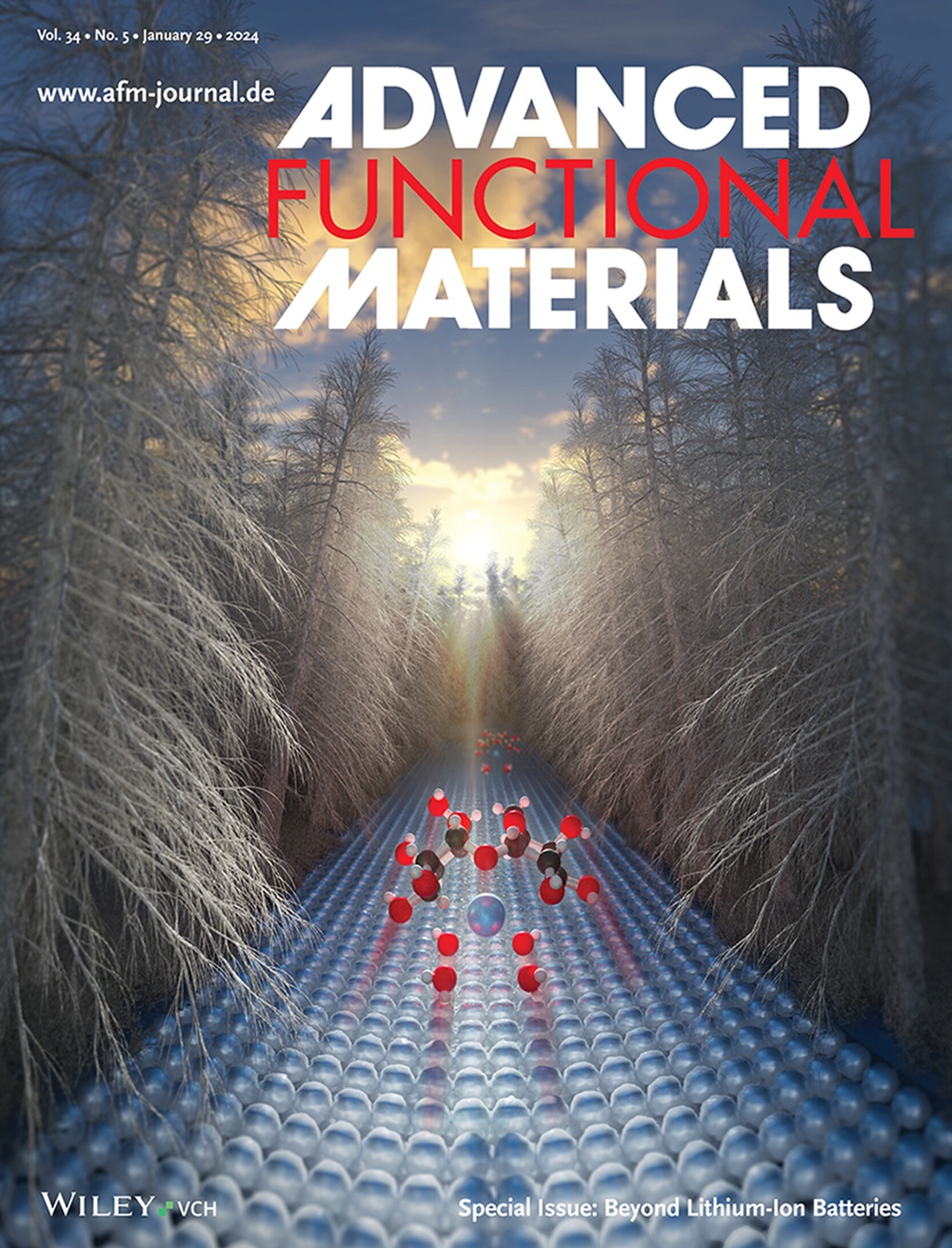使用他克莫司载体纳米薄膜的免疫隔离策略促进基于干细胞的稳定软骨再生
IF 18.5
1区 材料科学
Q1 CHEMISTRY, MULTIDISCIPLINARY
引用次数: 0
摘要
骨髓干细胞(BMSCs)工程软骨(BEC)有望在临床上修复软骨缺损。然而,当骨髓干细胞植入免疫功能正常的大型动物体内时,由于炎症浸润,骨髓干细胞很容易发生骨化。为解决这一问题,我们开发了一种纳米薄膜分离方法来增强 BEC 的软骨稳定性。他克莫司(FK506)以其免疫抑制作用而闻名,它与己二酸二酰肼(ADH)修饰的透明质酸(HA)结合在一起,形成了一种称为 FK506@HA-ADH 的酸响应大分子原药。然后将这种原药与聚(乳酸-共-乙醇酸)(PLGA)混合,形成电纺 FK506@HA/PLGA 纳米薄膜。在体外诱导山羊来源的 BMSCs 形成 BEC,并将其包裹在 FK506@HA/PLGA 纳米薄膜中,然后植入自体山羊的皮下。纳米薄膜起到了物理屏障的作用,阻止了免疫细胞的浸润。此外,在炎症引发的酸性环境和 PLGA 逐渐降解的过程中,FK506@HA-ADH 原药会被裂解,从而在需要时释放出 FK506。释放的 FK506 能有效对抗炎症细胞因子,促进软骨成熟。这些综合机制在免疫功能健全的山羊模型中明显抑制了 BEC 的肥大,并提高了其软骨稳定性。这种基于纳米薄膜的分离策略建立了一个免疫抑制龛,成功地防止了软骨内骨化,并促进了 BEC 软骨的稳定形成。这些进展对于将基于干细胞的软骨修复疗法转化为临床应用至关重要。本文章由计算机程序翻译,如有差异,请以英文原文为准。
Immuno-Isolation Strategy with Tacrolimus-Loaded Nanofilm Promotes Stable Stem Cell-Based Cartilage Regeneration
Bone marrow stem cells (BMSCs)-engineered cartilage (BEC) shows promise for clinically repairing cartilage defects. However, when implanted in immunocompetent large animals, BEC becomes susceptible to ossification due to inflammatory infiltration. To address this, a nanofilm isolation approach is developed to enhance BEC's chondrogenic stability. Tacrolimus (FK506), known for its immunosuppressive effect, is integrated into adipic dihydrazide (ADH)-modified hyaluronic acid (HA), creating an acid-responsive macromolecular prodrug called FK506@HA-ADH. This prodrug is then blended with poly(lactic-co-glycolic acid) (PLGA) to form electrospun FK506@HA/PLGA nanofilm. Goat-derived BMSCs are induced in vitro to form BEC, which is enclosed within the FK506@HA/PLGA nanofilm and subcutaneously implanted in autologous goats. The nanofilm acted as a physical barrier, preventing immunocyte infiltration. Additionally, in response to the acidic environment triggered by inflammation and the gradual degradation of PLGA, the FK506@HA-ADH prodrug is cleaved, releasing FK506 as needed. The released FK506 effectively countered inflammatory cytokines and promoted cartilaginous maturity. These combined mechanisms significantly inhibited BEC hypertrophy and improved its chondrogenic stability within an immunocompetent goat model. This nanofilm-based isolation strategy established an immunosuppressive niche, successfully preventing endochondral ossification and promoting stable cartilage formation in BEC. These advancements are crucial for translating stem cell-based therapies into clinical use for cartilage repair.
求助全文
通过发布文献求助,成功后即可免费获取论文全文。
去求助
来源期刊

Advanced Functional Materials
工程技术-材料科学:综合
CiteScore
29.50
自引率
4.20%
发文量
2086
审稿时长
2.1 months
期刊介绍:
Firmly established as a top-tier materials science journal, Advanced Functional Materials reports breakthrough research in all aspects of materials science, including nanotechnology, chemistry, physics, and biology every week.
Advanced Functional Materials is known for its rapid and fair peer review, quality content, and high impact, making it the first choice of the international materials science community.
 求助内容:
求助内容: 应助结果提醒方式:
应助结果提醒方式:


